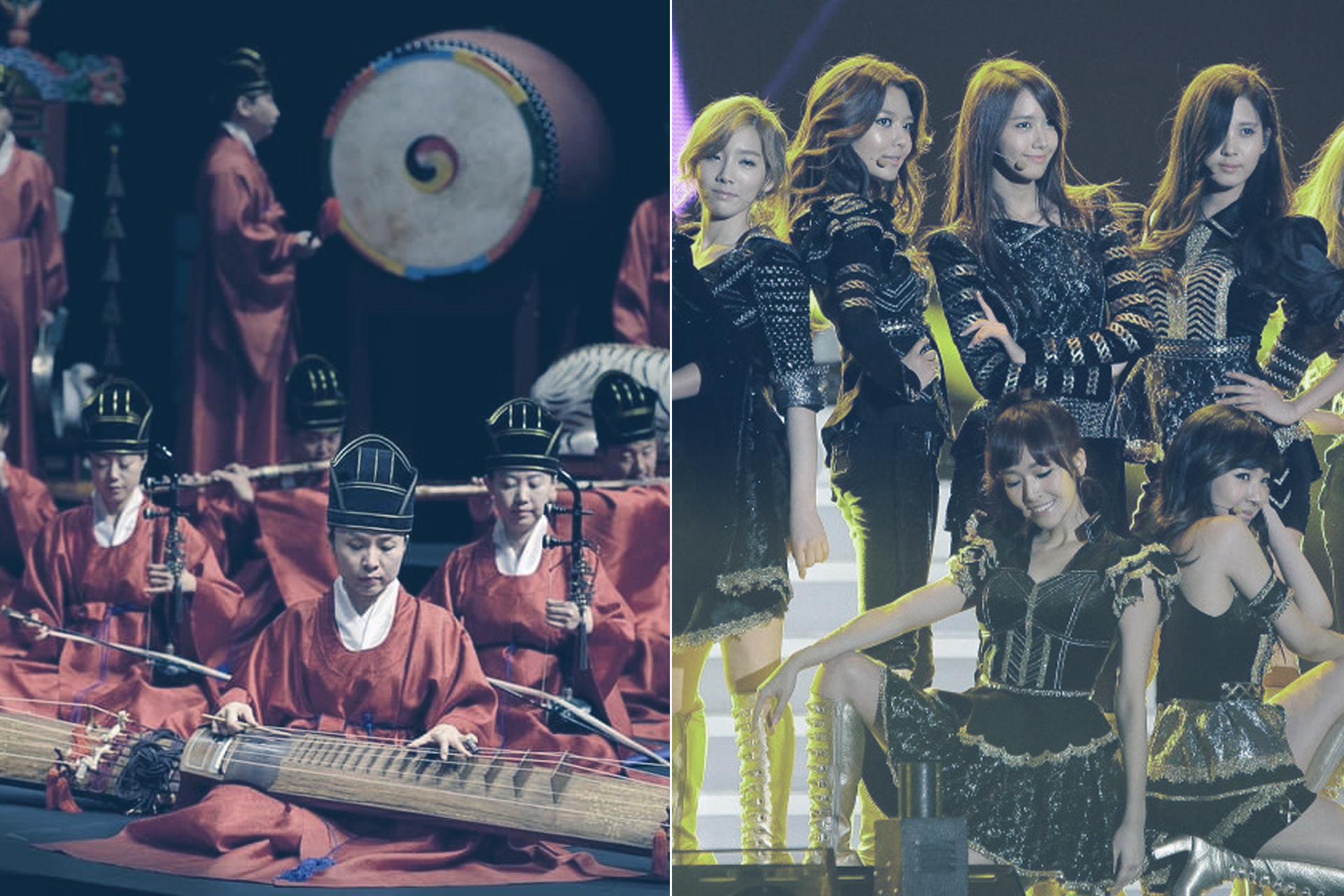The History of Korean Music: How Traditional Genres Led to K-Pop’s Rise.
|

Find out how centuries of folk, trot, and protest anthems built K-Pop’s DNA in the history of Korean Music.
K-Pop may dominate global charts today, but its roots run deep — shaped by centuries of cultural expression, colonial resistance, modernization, and musical innovation. From ancient folk rhythms to 20th-century trot and protest songs, Korea’s rich musical heritage has paved the way for the glossy pop productions we now know and love.
From Folk Songs to Court Music: The Origins
Traditional Korean music, or gugak (국악), includes a wide range of genres — from the stately jongmyo jeryeak performed in royal courts, to communal folk songs like arirang that were sung across villages. These styles emphasized emotion, rhythm, and storytelling — values that remain central to K-Pop ballads and OSTs today.
Folk songs (minyo) used pentatonic scales and were deeply tied to local dialects and life experiences. Their expressive melodies and repetitive choruses laid an early blueprint for modern pop hooks. Even BTS sampled arirang in global performances, paying homage to its emotional power.
The Birth of Trot: Korea’s First Pop Sound
In the early 20th century, trot (트로트) emerged during Japanese occupation, blending Korean melodies with Japanese enka, Western instruments, and waltz-like rhythms. Characterized by its vibrato-heavy vocals and melancholy themes, trot became the earliest form of Korean popular music.
Artists like Lee Nan-young and later, Nam Jin or Jang Yoon-jeong, popularized the genre across generations. Though often associated with older audiences today, trot introduced the idea of music as a commercial and emotional outlet — an idea central to modern idol music.
Many K-Pop vocalists still incorporate trot techniques in training, and the genre has recently made a comeback among younger audiences through variety shows and idols embracing its retro flair.
Protest Music and Identity: The Sound of Resistance
In the 1970s and 1980s, under political unrest and authoritarian regimes, norae undong (“song movement”) emerged — a wave of protest music focused on democracy, workers’ rights, and national identity. Artists like Kim Min-ki used acoustic guitars and folk influences to ignite awareness and unity.
These songs instilled a sense of purpose and collective power — something echoed in modern anthems like BTS’s “Spring Day” or Dreamcatcher’s “MAISON,” which speak to social issues through pop.
This history of music as a political and emotional tool informs K-Pop’s emotional depth and the way fandoms today unite not just around idols, but causes.
Western Influence and the Birth of Idol Culture
After the Korean War and into the 1990s, American rock, hip-hop, and R&B flooded Korean airwaves via U.S. military bases and imported media. Seo Taiji and Boys revolutionized the scene in 1992 by blending Korean lyrics with hip-hop beats and socially critical themes — the first real spark of modern K-Pop.
From then on, the “idol system” took shape: curated training programs, genre-blending production, and highly visual performances. But beneath the glitz, the DNA of K-Pop still reflects its roots — emotional vocals from trot, storytelling from folk traditions, and the urgency of protest songs.
Why This History Still Matters
K-Pop is not just a product of catchy hooks and synchronized dancing — it’s the culmination of centuries of evolution. Today’s idols stand on the shoulders of shamans, resistance singers, and trot divas. Knowing this history deepens our appreciation for the genre’s complexity and cultural value.
As sori. continues to spotlight K-music in all its forms, tracing these roots reminds us that even the newest comeback carries echoes of the past.

Leave a Reply